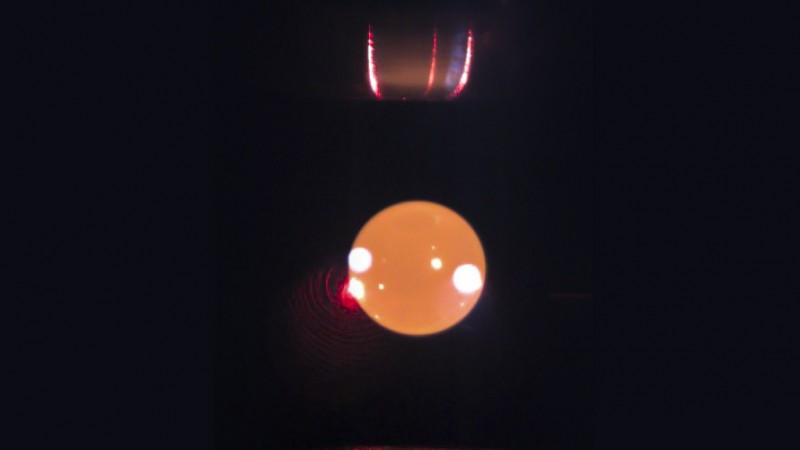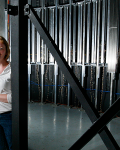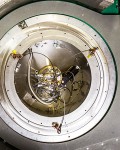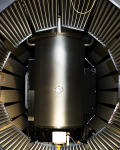The Neutron Electrostatic Levitator (NESL)—a device that enables researchers to study substances suspended in mid-air—is now up and running at the Spallation Neutron Source’s (SNS’s) Cold Neutron Chopper Spectrometer (CNCS), SNS BL-5 at the Department of Energy’s (DOE’s) Oak Ridge National Laboratory (ORNL).
“Having access to quasi-elastic neutron scattering allows us to study the diffusion kinetics of all kinds of systems. It adds a whole new range of capabilities to our instrument,” said Dante Quirinale, a postdoctoral researcher with the Neutron Technologies Division.
Quirinale says the levitator, which suspends charged matter within a three-dimensional electrical field, is especially useful for studying metals, liquid or solid, at extremely high temperatures.
“When you’re looking at very hot samples within a vessel, you need to worry about interactions with the container, which can result in contamination, or worse, containment failure. Those interactions can also limit your ability to supercool a liquid below its melting temperature, especially for the long times needed for neutron scattering. Levitation, because it removes the container, eliminates those risks entirely,” said Quirinale.
NESL has already been used at the Nanoscale-Ordered Materials Diffractometer (NOMAD), SNS BL-1B, and the Wide Angular-Range Chopper Spectrometer (ARCS), SNS BL-18, to take elastic and inelastic measurements of liquid structure and dynamics, respectively. At CNCS, NESL will be especially helpful to users interested in high-entropy alloys, superalloys, and glass-forming metals, important components of everything from airplanes to power transformers.
The NESL was developed as a result of a collaboration funded by the National Science Foundation and led by Kenneth F. Kelton of Washington University, Takeshi Egami of the University of Tennessee, Alan I. Goldman from Iowa State University, and Xun-Li Wang from the City University of Hong Kong (formerly of ORNL).
Designed as a sample environment for the Spallation Neutron Source, the NESL enables previously impossible studies on the fundamental physics of metallic liquids and high-temperature phase transitions, such as exploring the underlying mechanisms of viscosity and the nature of the glass transition.
Now operating regularly at NOMAD, ARCS, and CNCS, the NESL provides a sample environment to explore the short- and medium-range ordering and dynamics in high-temperature and oxygen-sensitive or reactive materials.
SNS is a DOE Office of Science User Facility. UT-Battelle LLC manages ORNL for DOE’s Office of Science. The Office of Science is the single largest supporter of basic research in the physical sciences in the United States and is working to address some of the most pressing challenges of our time. For more information, please visit http://science.energy.gov/.—by Gage Taylor







